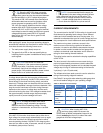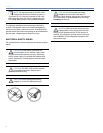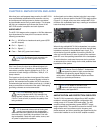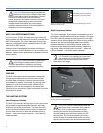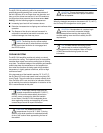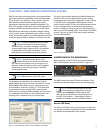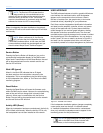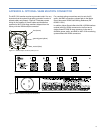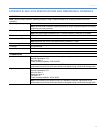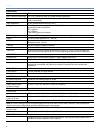
18
APPENDIX B
AUDIO INPUT
Type Differential, electronically balanced
Max. common mode range ±15 V DC, clamped to earth for voltage transient protection
Connectors Female XLR input with male XLR loop output or VEAM all-in-one connector (integrates AC,
audio, and network)
Input impedance 10 kΩ differential between pins 2 and 3
Wiring Pin 1: Chassis/earth through 220 kΩ, 1000 pF, 15 V clamp network to provide virtual
ground lift at audio frequencies
Pin 2: Signal +
Pin 3: Signal –
Case: Earth ground and chassis
DC Blocking Differential DC blocking up to maximum common mode voltage
CMRR >50 dB, typically 80 dB (50 Hz – 500 Hz)
RF filter Common mode: 425 kHz
Differential mode: 142 kHz
TIM filter <80 kHz, integral to signal processing
Nominal input sensitivity 0 dB V (1 V rms, 1.4 V pk) continuous is typically the onset of limiting for noise and music.
Input level Audio source must be capable of producing +20 dBV (10 V rms, 14 V pk) into 600 Ω in
order to produce maximum peak SPL over the operating bandwidth of the loudspeaker
AMPLIFIERS
Amplifier type Three-channel complementary MOSFET output stages (class AB/H)
Output power 1275 W (three channels; 2 x 500 W, 1 x 275 W); 2550 W peak
Note: Amplifier wattage rating based on the maximum unclipped burst sine-wave rms
voltage that the amplifier will produce for at least 0.5 seconds into the nominal load
impedance.
THD, IM TIM < .02%
Load capacity 2 Ω low channels; 8 Ω high channel
Cooling Convection
AC POWER
AC power connector PowerCon with looping output or VEAM
Voltage selection Automatic, two ranges, each with high-low voltage tap (uninterrupted)
Safety agency rated
operating voltage
95 V AC – 125 V AC, 208 V AC – 235 V AC, 50/60 Hz
Turn on/turn off points 85 V AC – 134 V AC; 165 V AC – 264 V AC
Current Draw
Idle current .650 A rms (115 V AC); .310 A rms (230 V AC); .760 A rms (100 V AC)
Max. long-term continuous
current (>10 sec)
4.67 A rms (115 V AC); 2.37 A rms (230 V AC); 5.25 A rms (100 V AC)
Burst Current (<1 sec) 7.90 A rms (115 V AC); 4.10 A rms (230 V AC); 9.24 A rms (100 V AC)
Note: AC power cabling must be of sufficient gauge so that under burst current RMS conditions, cable transmission
losses do not drop voltage below specified operating range at the speaker.
Ultimate Short-Term Peak
Current Draw
20.0 A pk (115 V AC); 10.0 A pk (230 V AC); 21.8 A pk (100 V AC)
Inrush Current 10 A pk (115 and 100 V AC); 18 A pk (230 V AC)
RMS NETWORK (Optional)
Equipped with two-conductor twisted-pair network, reporting all operating parameters of
amplifiers to system operator’s host computer.



